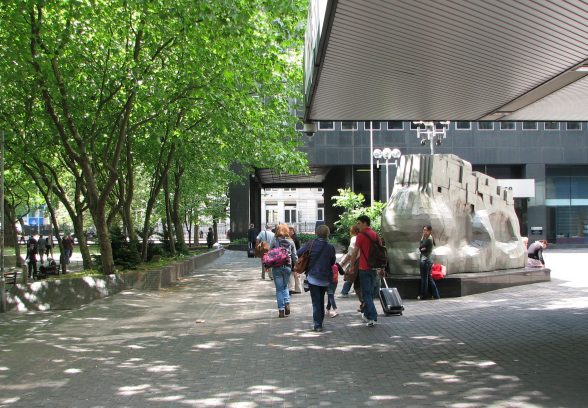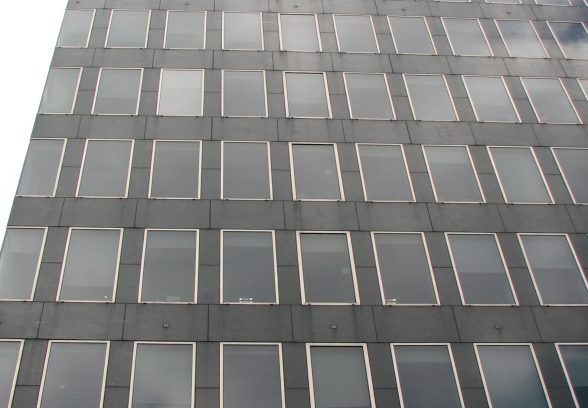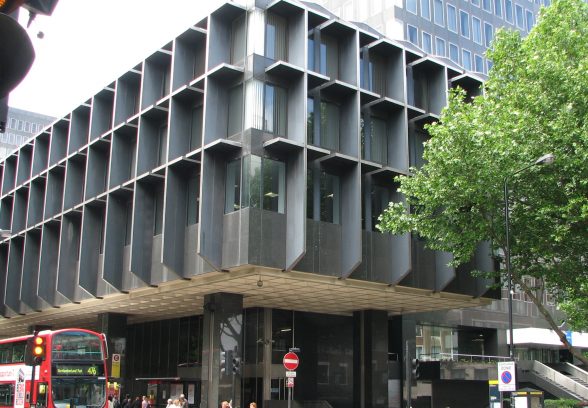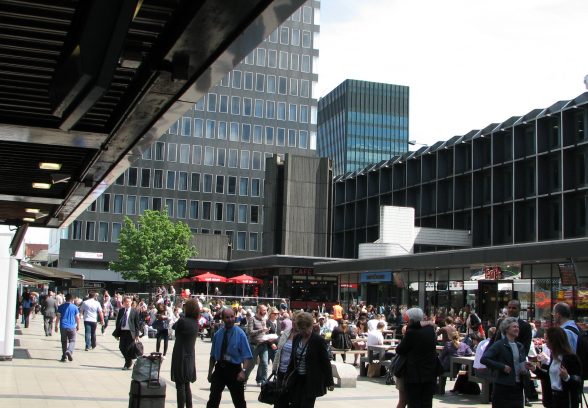This website uses cookies
This website uses cookies to enable it to function properly and to analyse how the website is used. Please click 'Close' to accept and continue using the website.






November 2011 - Euston Station, London
R L Moorcroft & Richard Seifert and Partners, by Mark Crinson
Which of London’s railway termini relates best to the surrounding city? At which of them can we most enjoy the passage from street to booking hall? In my view, there’s only one candidate – Euston. This suggestion will appal those conservationists incurably nostalgic for the old Victorian station; few can look at Euston without imagining what it might be like with Hardwick’s arch, even in replica, standing implacably across the station’s approach road. As the founding site of conservationist legend, Euston Station still causes banners to be unfurled and old campaign medals to be polished again. But if it was ‘villainy’, an ‘architectural crime’ against one of Victorian architecture’s most distinctive monuments, then that is not the replacement’s fault. Perhaps, belatedly, we can admire the new Euston Station’s qualities, understanding that in many ways they are the inversion of the pleasures of a Victorian railway terminus. It’s been with us for a long time, of course, it’s just that while some have sulked the train-travelling public have got on with using and even enjoying these great public spaces.
What we see now is mostly the result of two building campaigns after the demolition of Victorian Euston in 1961. The new station was started soon after with R. L. Moorcroft’s main passenger hall finished by 1968. In front of the station the office complex of three towers and a raised linking block is the work of Richard Seifert and Partners and dates from 1974-8. This is the equivalent of the station hotel on the public side of a Victorian terminus but it offers far more penetrability from the surrounding city into the station itself. To me it’s the combination of both of these complexes, as well as the surrounding lawns, railings, access roads, war memorial, and gate lodges – some of it inherited from the old station – that make Euston such a rewarding place. It’s moderate and sensible in its necessary rationality, inclusive in its embrace, yet still suave and elegant in some of its details.
The undeniable blot at Euston, of course, is at the very point of arriving or departing by train. The platforms are low-roofed, the light dim, and there’s no reason to pause until we’ve scurried up the ramps. But everything improves after this. First, we’re released into a calm well-proportioned passenger hall with a high clerestory running all four sides round its ceiling, everything durably faced in polished granite or white tile. Most travellers won’t be over-awed or enchanted by this space, and it certainly lacks the pomp of Hardwick’s Great Hall, but what it aims at instead is a kind of quiet, reassuring order – that if the 10.05 to Manchester is late then everything is in hand. And we can easily decant from this space east or west or straight ahead to the tube or to buses beyond a visible forecourt. Of course this and other spaces are over-cluttered with retail outlets and under-supplied with seating, but that seems to be a condition of twenty-first century travel. A better way to do the private realm is embodied by Seifert’s complex. The svelte surfaces of these towers combine polished black stone, glass, and metal frames in one solemn yet classy skin. The ground floor spaces reward examination, and those wonderful corner windows on the towers are one of my favourite details in late British modernism, reminiscent of the glamorous discretion of a 1920s Viennese shop front. Seifert’s designers had a way with a sleek, rather continental glamour – Mies meets retro-moderne.
But the public realm keeps getting reasserted at Euston. The first forecourt after the passenger hall is like an animated Gordon Cullen drawing, framed on one side by the cheeriest of station pubs, the Doric Arch (once the Head of Steam). Beyond that more courtyards and covered passages take us to the raised cross-axial linking slab that prepares us for descent to the bus stops. After the station’s simplicity we now encounter an almost baroque plasticity in the surfaces of this slab – a grid of metal fins slotted into the facades and a coffered ceiling absorbing and deflecting the sounds of the waiting buses. And between the modern buildings and the surviving lodges on Euston Road there are trees, grass, sculpture and plentiful seating. Is there a better place to wait outside a London station or an easier one for getting other transport? Or even a better way to end a day in London when we return? In the glow of evening, Seifert’s towers act as a beacon, the light shining through their corners and playing illusionistic games of reflection and dissolution across their surfaces.
Since 2005 there have been several plans to redevelop both the station and the office blocks, driven more by commercial imperatives than the congestion caused by the sheer number of people who pass through. Nothing seems imminent, but perhaps in a hundred years time we might be campaigning to salvage Seifert’s stone from the River Lea.
Mark Crinson is Professor of Art History at the University of Manchester. His book Stirling and Gowan: Architecture from Austerity to Affluence will be published by Yale University Press next year.
Look for past Buildings of the Month by entering the name of an individual building or architect or browsing the drop down list.

Become a C20 member today and help save our modern design heritage.